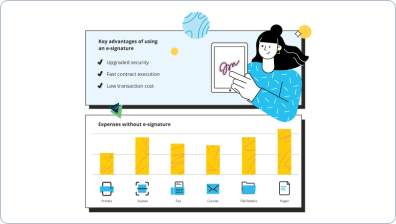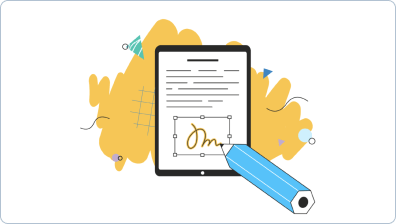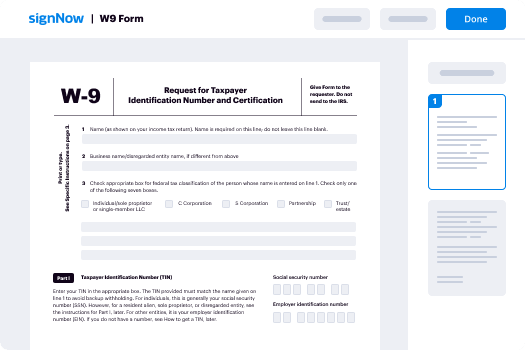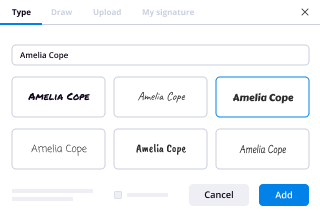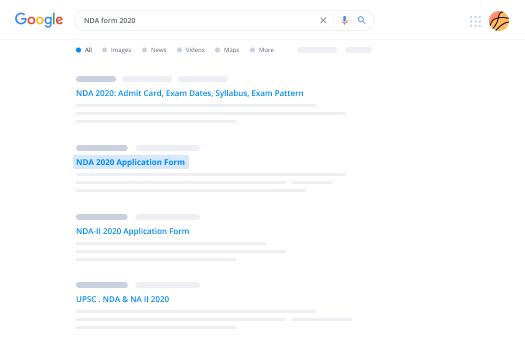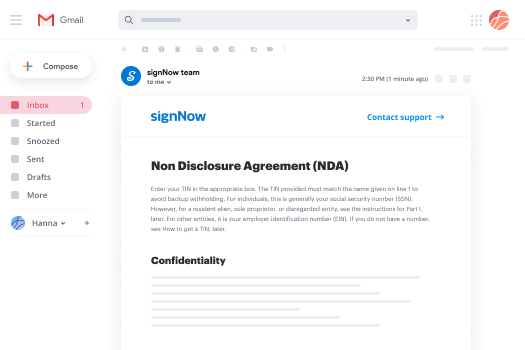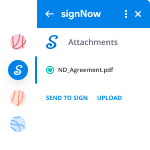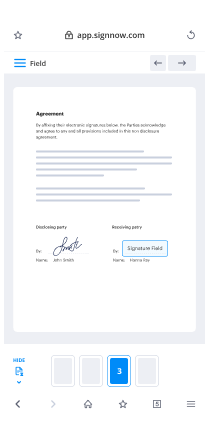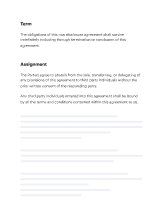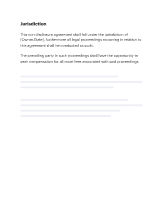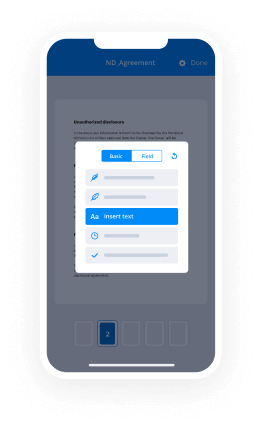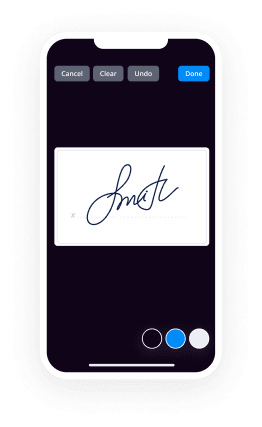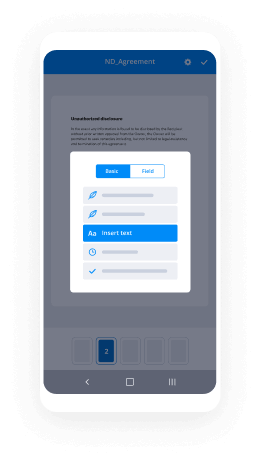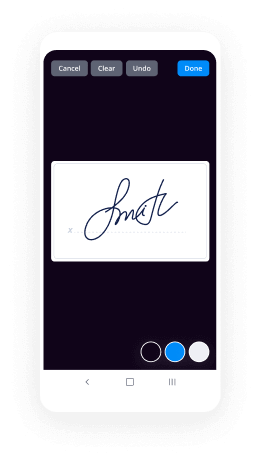What is a File Signature
- Quick to start
- Easy-to-use
- 24/7 support
Simplified document journeys for small teams and individuals

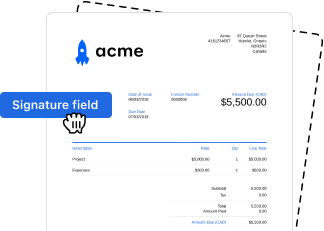


We spread the word about digital transformation
Why choose airSlate SignNow
-
Free 7-day trial. Choose the plan you need and try it risk-free.
-
Honest pricing for full-featured plans. airSlate SignNow offers subscription plans with no overages or hidden fees at renewal.
-
Enterprise-grade security. airSlate SignNow helps you comply with global security standards.







Get better value when signing with airSlate SignNow
Benefit from simple setup and onboarding
Check out better ways to manage documents
Make the best use of collaboration features
Implement integrations and API for better outcomes
Log in to airSlate SignNow from any device
Stay compliant and secure when eSigning
Quick guide: electronic signature open source
airSlate SignNow electronic signature is a powerful solution for simplifying data collection, contract negotiation, internal and external collaboration, and streamlining decision-making processes. Signing documents electronically is simple for teams, partners and customers, and it helps your business cut down on paper waste and unneeded budget spend.
Complete the following steps listed below and find out esignature open source:
- Launch your web browser and go to signnow.com.
- Subscribe for a free trial run or log in utilizing your electronic mail or Google/Facebook credentials.
- Click on User Avatar -> My Account at the top-right corner of the webpage.
- Customize your User Profile with your personal data and changing configurations.
- Create and manage your Default Signature(s).
- Return to the dashboard webpage.
- Hover over the Upload and Create button and select the appropriate option.
- Click on the Prepare and Send option next to the document's title.
- Enter the email address and name of all signers in the pop-up window that opens.
- Make use of the Start adding fields option to begin to edit file and self sign them.
- Click on SAVE AND INVITE when you're done.
- Continue to customize your eSignature workflow employing advanced features.
”File signature” is a great question and one that airSlate SignNow is the answer to. Get the features you and your team need for delighting your customers and partners with a better way of running your business. eSign the first document right now!
How it works
Rate file signature
What is the electronic signature open source
An electronic signature open source refers to software solutions that allow users to create, manage, and verify electronic signatures without the constraints of proprietary systems. These tools enable businesses and individuals to sign documents digitally while ensuring compliance with legal standards. Open source solutions provide flexibility, allowing users to customize features according to their specific needs, promoting transparency in the signing process.
How to use the electronic signature open source
Using an electronic signature open source solution typically involves several straightforward steps. First, users need to upload the document they wish to sign. Next, they can fill out any required fields directly within the document. Once the document is prepared, users can apply their electronic signature by selecting the appropriate option within the software. After signing, the document can be securely shared with other parties for their signatures, if needed. Finally, users can store the completed document in a secure location for future reference.
Steps to complete the electronic signature open source
Completing an electronic signature using open source software involves the following steps:
- Upload Document: Begin by selecting the document you want to sign from your device.
- Fill Out Fields: Use the software to fill in any necessary information, such as names, dates, or other relevant details.
- Apply Signature: Choose the option to eSign, which may involve drawing your signature or selecting a pre-saved signature.
- Send for Signature: If additional signatures are required, send the document to other signers directly through the platform.
- Store and Manage: Once all signatures are collected, store the document securely within the software for easy access.
Legal use of the electronic signature open source
Electronic signatures created through open source software are legally recognized in the United States under the Electronic Signatures in Global and National Commerce (ESIGN) Act and the Uniform Electronic Transactions Act (UETA). These laws affirm that electronic signatures hold the same legal weight as traditional handwritten signatures, provided that both parties consent to use electronic means for signing. It is essential for users to ensure that their chosen solution complies with these regulations to maintain the validity of their signed documents.
Security & Compliance Guidelines
When using electronic signature open source software, it is crucial to adhere to security and compliance guidelines to protect sensitive information. Users should ensure that the software employs encryption to safeguard data during transmission and storage. Additionally, implementing authentication measures, such as multi-factor authentication, can enhance security. Regular audits and updates of the software are also recommended to address any vulnerabilities and ensure compliance with relevant laws and regulations.
Documents You Can Sign
Electronic signature open source solutions can be used to sign a wide variety of documents, including:
- Contracts and agreements
- Legal documents
- HR forms, such as employment contracts
- Tax forms
- Invoices and purchase orders
- NDAs (Non-Disclosure Agreements)
This versatility allows businesses and individuals to streamline their signing processes across different types of documents.
Sending & Signing Methods (Web / Mobile / App)
Electronic signature open source solutions typically offer multiple methods for sending and signing documents. Users can access the software through web browsers, mobile applications, or dedicated desktop applications. This flexibility enables users to sign documents on the go, ensuring that they can complete transactions quickly and efficiently, regardless of their location. Each method maintains the same level of security and compliance, allowing for a seamless signing experience.
-
Best ROI. Our customers achieve an average 7x ROI within the first six months.
-
Scales with your use cases. From SMBs to mid-market, airSlate SignNow delivers results for businesses of all sizes.
-
Intuitive UI and API. Sign and send documents from your apps in minutes.
FAQs file signature analysis
-
What is an electronic signature open source?
An electronic signature open source refers to software that allows users to create and manage electronic signatures while providing access to its source code. This means businesses can customize the software to meet their specific needs. By utilizing an electronic signature open source solution, companies can enhance their document signing processes without incurring high licensing fees.
-
How does airSlate SignNow compare to other electronic signature open source solutions?
airSlate SignNow stands out among electronic signature open source solutions due to its user-friendly interface and robust features. It offers seamless integrations with various applications, making it easy to incorporate into existing workflows. Additionally, its cost-effective pricing model ensures that businesses of all sizes can benefit from its capabilities.
-
What are the key features of airSlate SignNow's electronic signature open source?
Key features of airSlate SignNow's electronic signature open source include document templates, real-time tracking, and multi-party signing. These features streamline the signing process and enhance collaboration among users. Furthermore, the platform ensures compliance with legal standards, making it a reliable choice for businesses.
-
Is airSlate SignNow suitable for small businesses looking for electronic signature open source?
Yes, airSlate SignNow is an excellent choice for small businesses seeking an electronic signature open source solution. Its cost-effective pricing and easy-to-use interface make it accessible for companies with limited resources. Small businesses can leverage its features to improve efficiency and reduce paperwork.
-
Can I integrate airSlate SignNow with other software as an electronic signature open source?
Absolutely! airSlate SignNow offers numerous integrations with popular software applications, enhancing its functionality as an electronic signature open source. Whether you use CRM systems, project management tools, or cloud storage services, you can easily connect airSlate SignNow to streamline your document workflows.
-
What are the benefits of using an electronic signature open source solution like airSlate SignNow?
Using an electronic signature open source solution like airSlate SignNow provides numerous benefits, including cost savings, customization options, and enhanced security. Businesses can tailor the software to fit their specific needs while ensuring that sensitive information is protected. Additionally, the ease of use promotes faster document turnaround times.
-
How secure is airSlate SignNow as an electronic signature open source platform?
airSlate SignNow prioritizes security, employing advanced encryption and compliance with industry standards to protect user data. As an electronic signature open source platform, it allows businesses to review and modify security protocols as needed. This ensures that sensitive documents remain safe throughout the signing process.
Electronic signature open source
Trusted eSignature solution - file signature jpg
Related searches to file signatures
Join over 28 million airSlate SignNow users
Get more for jpeg file signature
- Unlock eSignature Legitimacy for Financial Services in ...
- Unlock the Power of eSignature Legitimacy for Financial ...
- Enhance eSignature Legitimacy for Financial Services in ...
- ESignature Legitimacy for Financial Services in UAE
- Optimize eSignature Legitimacy for Financial Services ...
- Enhancing eSignature Legitimacy for Government in ...
- Unlock eSignature Legitimacy for Government in ...
- ESignature Legitimacy for Government in United States
The ins and outs of eSignature
